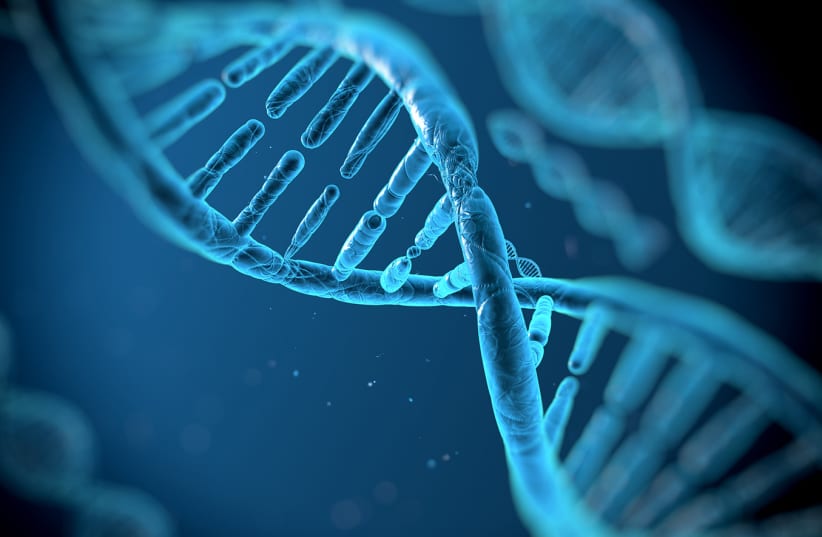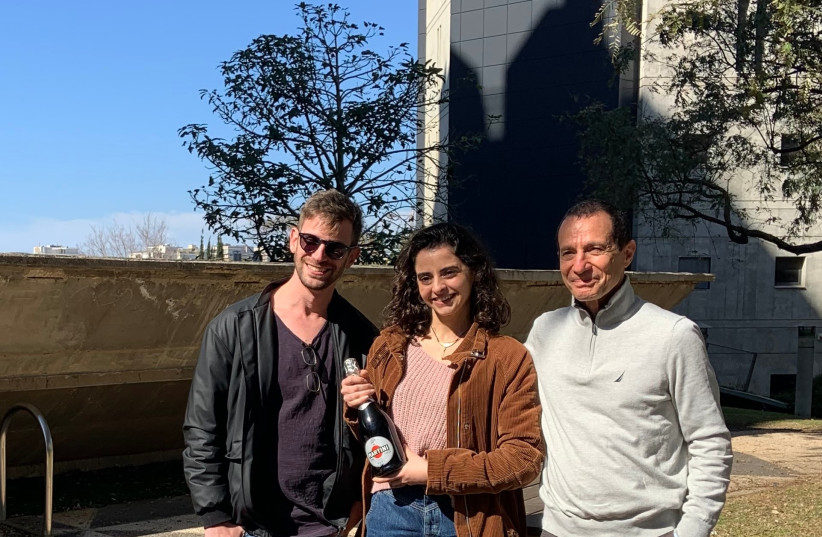Experts in anatomy marvel that the small intestine – nearly seven meters, or three-and-a-half times the length of your body – is packed into the human digestive tube. But a much more impressive biological feat is that two meters of DNA is packed into the nucleus – just a few micrometers long (one micrometer equals 0.001 millimeters) of every cell in the body.
Researchers around the world have tried for decades to crack this riddle. But a groundbreaking study at Tel Aviv University could bring science significantly closer to the answer, and eventually improve the understanding and treatment of a wide variety of diseases from cancer, schizophrenia and bipolar disorder (manic depression) to Parkinson’s disease, familial dysautonomia, spinal muscular atrophy and multiple sclerosis.
The development of drugs for every specific disease is a long and complex process, but this new discovery could speed it up significantly.
Prof. Gil Ast of the department of human molecular genetics and biochemistry at TAU’s Sackler Faculty of Medicine and his laboratory team have just published a new study on this riddle entitled, “Gene architecture directs splicing outcome in separate nuclear spatial regions” in the journal Molecular Cell.
“We found a unique way in which DNA is packaged into the nucleus: splicing RNA,” he said. “Genes at the periphery of the nucleus are very different from those in center. Many studies have been published on DNA packaging that served as a foundation. Every new discovery adds something. But ours is a breakthrough, building a very important new layer on that. Every new discovery involves the right timing.”
Ast has been involved in the field for three decades, and he and his team spent six years on their new discovery. The important revelation was made by Ast’s doctoral students Luna Tammer and Ofir Hameiri, together with TAU’s Prof. Roded Sharan, and researchers from Bar-Ilan University and others in Portugal, Spain and the US.
The TAU researchers found a gradual shift in the architecture of building blocks (bases/nucleotides) of the DNA chain inside the nucleus, from the periphery to the center. In other words, a high content of two types of building blocks is found in the periphery, gradually shifting to a high content of the other two types toward the nuclear center. The genes that are dispersed along the DNA are also sorted according to their main building blocks, a key to understanding how the DNA is packed inside the nucleus.
“Our body consists of trillions of cells,” Ast explained. “Each cell has a nucleus that contains our genetic code: a two-meter-long total of DNA molecules that we inherit from our parents. The DNA consists of pairs of building blocks (bases/nucleotides) designated with letters G, C, A, and T, which are distributed differently in various regions of the DNA. Our findings indicate that DNA sequences in the periphery of the nucleus tend to be rich with AT bases, and as DNA sequences are localized closer to the center, their content of GC bases is gradually elevated.
“They showed that this is true for almost every cell type in the body, and that the specific location of each gene has an impact on its expression and the following pre-mRNA (messenger RNA) processing. Based on these findings, we further showed that genes located in different regions of the nucleus have different types of mechanisms to produce their mRNA products. We believe that this understanding can contribute significantly to the development of innovative gene therapies for genetic diseases and cancer.”
He said that genes are essentially the activation areas scattered throughout the DNA. Each gene contains a genetic code that is transcribed into mRNA molecules, which in turn are translated to proteins that perform various functions in our body.
A recent example is the corona vaccine that contains the virus’s mRNA molecules that are translated in our cells to the well-known ‘spike proteins,’ so that our immune system can recognize and therefore better react against them in case of contagion.
“The structure of mRNA molecules can be compared to a train,” he said. “Each ‘car,’ or exon, carries different genetic information, and these ‘cars’ are connected by ‘cables,’ or introns, of various lengths. The mRNA molecule is created by a process called splicing, in which the ‘cars’ are ligated together and the connecting ‘cables’ are severed.”
They combined several bioinformatic techniques with ‘wet’ biological experiments. A wet lab, or experimental lab, is a place where it is necessary to handle various types of chemicals and potential “wet” hazards, so the room has to be carefully designed, constructed and controlled to avoid spillage and contamination.
The researchers identified a significant difference in the composition of the building blocks of genes located in central vs. peripheral regions of the nucleus. They also found that this difference is linked to different types of mutations that cause genetic diseases and cancer, in terms of their effect on the mRNA products.
In the nuclear periphery, mutations cause the splicing process to skip a “car” in the “train,” joining the “car” before it to the one after it, while in the nuclear center, mutations prevent the cutting of one of the cables. In both cases, the mRNA product is translated to a defective protein that cannot perform its function properly, hence the disease.
The researchers expect their findings to drive innovative genetic-molecular treatments for cancer and splicing-related genetic diseases. They predict that it will accelerate the development of “antisense therapy” – an innovative method that repairs mutations by blocking defective areas in the mRNA. This method has already proved successful in some instances, such as SMA, a genetic disease that causes muscle degeneration and paralysis.
“Our findings provide an important insight into how the DNA is packed inside the cell nucleus, with AT-rich regions in the periphery and GC-rich regions in the center,” said Ast. “We believe that the gradual separation between the two types of DNA sequences inside the nucleus is caused by attraction and repulsion between electrical charges, and we intend to address this question in future research.
“Our discovery also contributes to the future development of innovative gene therapies for cancer and genetic diseases. The method, known as ‘antisense therapy’, has enormous potential, and was already proved effective in some conditions, such as SMA. It involves producing a kind of ‘plaster’ that penetrates the cell and places itself precisely on the defective spot in the mRNA, thereby blocking the gene’s faulty activity and essentially repairing the mutation.”
Until now, drugs for the treatment of such diseases have been developed using long trial and error procedures, in which developers search for the right spot to place the plaster on the mRNA.
“Our findings direct drug developers to the right place with a much higher accuracy,” said Ast. “At the center of the nucleus, the plaster should block ‘cars,’ while in peripheral genes cables must be blocked. At present, we are developing more tools for drug developers, to enable rapid and efficient development of the right ‘plaster’ for every disease.”

